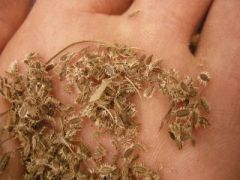 Carpesium
abrotanoides. 鹤
虱 Hè
shī- "Crane's louse"
Carpesium Family: Araceae
Carpesium
abrotanoides. 鹤
虱 Hè
shī- "Crane's louse"
Carpesium Family: Araceae
 Carpesium
abrotanoides. 鹤
虱 Hè
shī- "Crane's louse"
Carpesium Family: Araceae
Carpesium
abrotanoides. 鹤
虱 Hè
shī- "Crane's louse"
Carpesium Family: Araceae

 HABITAT:
Grows in virgin wild, and in grassy thickets along forest edges and roadsides.
HABITAT:
Grows in virgin wild, and in grassy thickets along forest edges and roadsides.